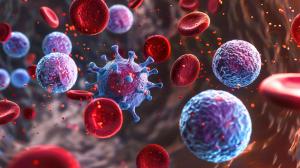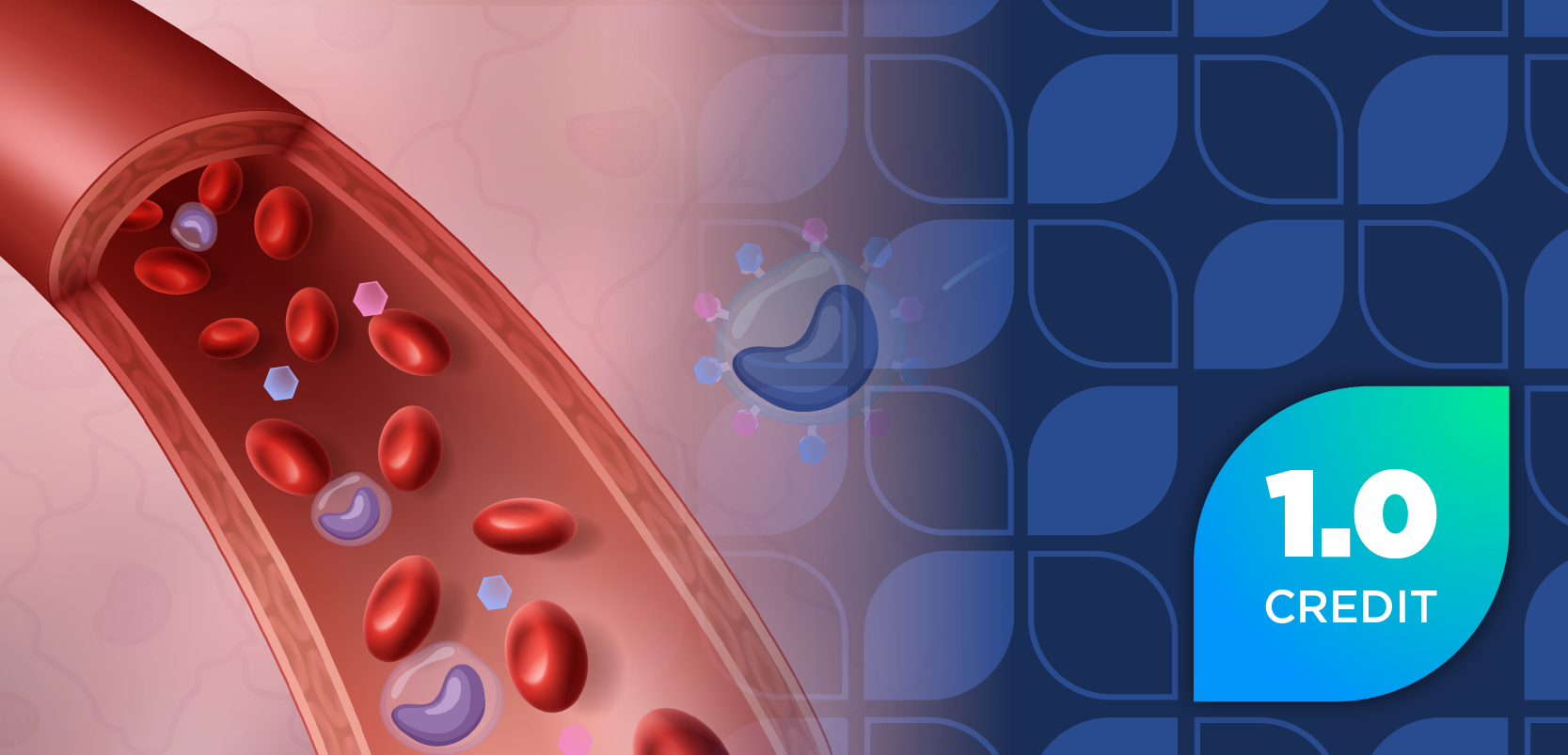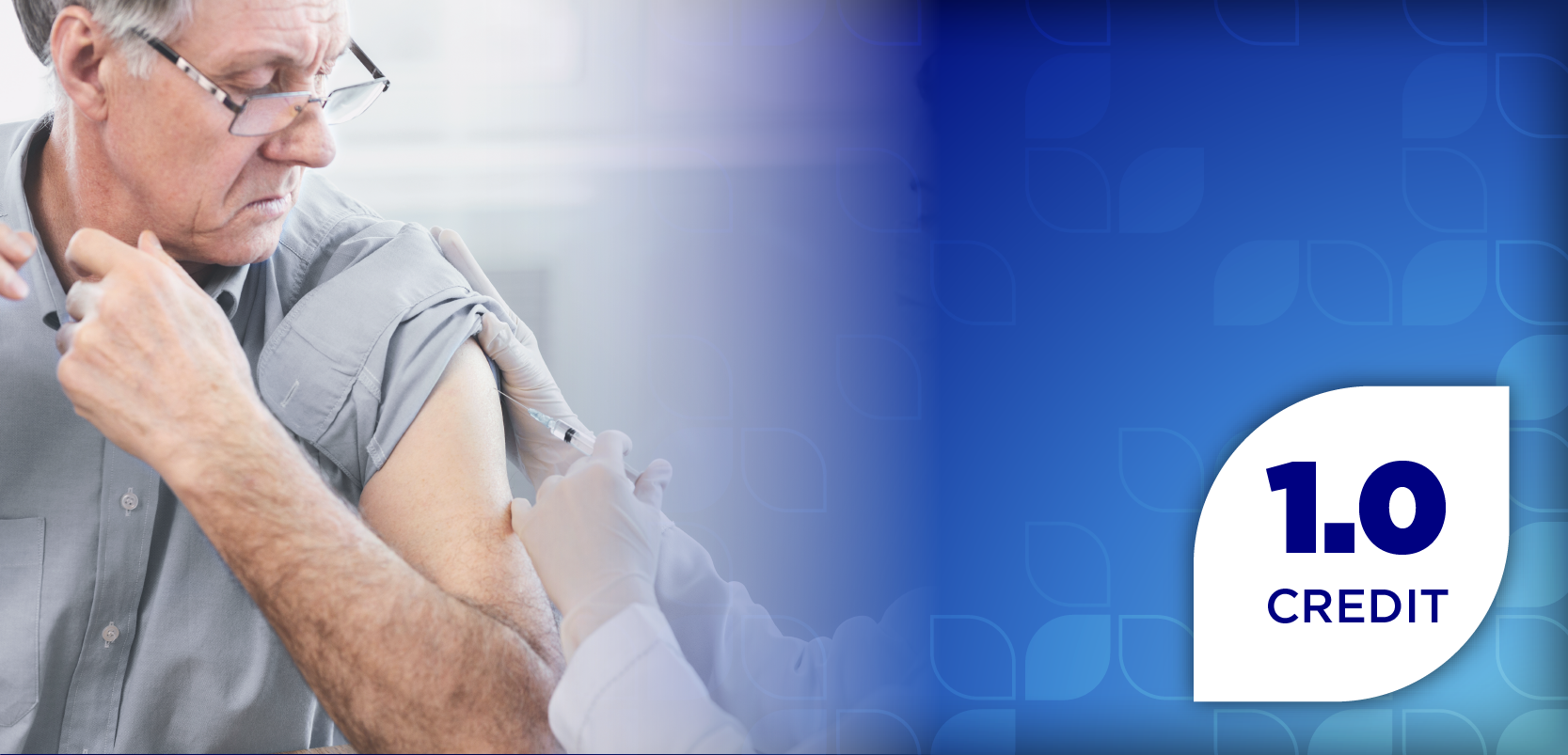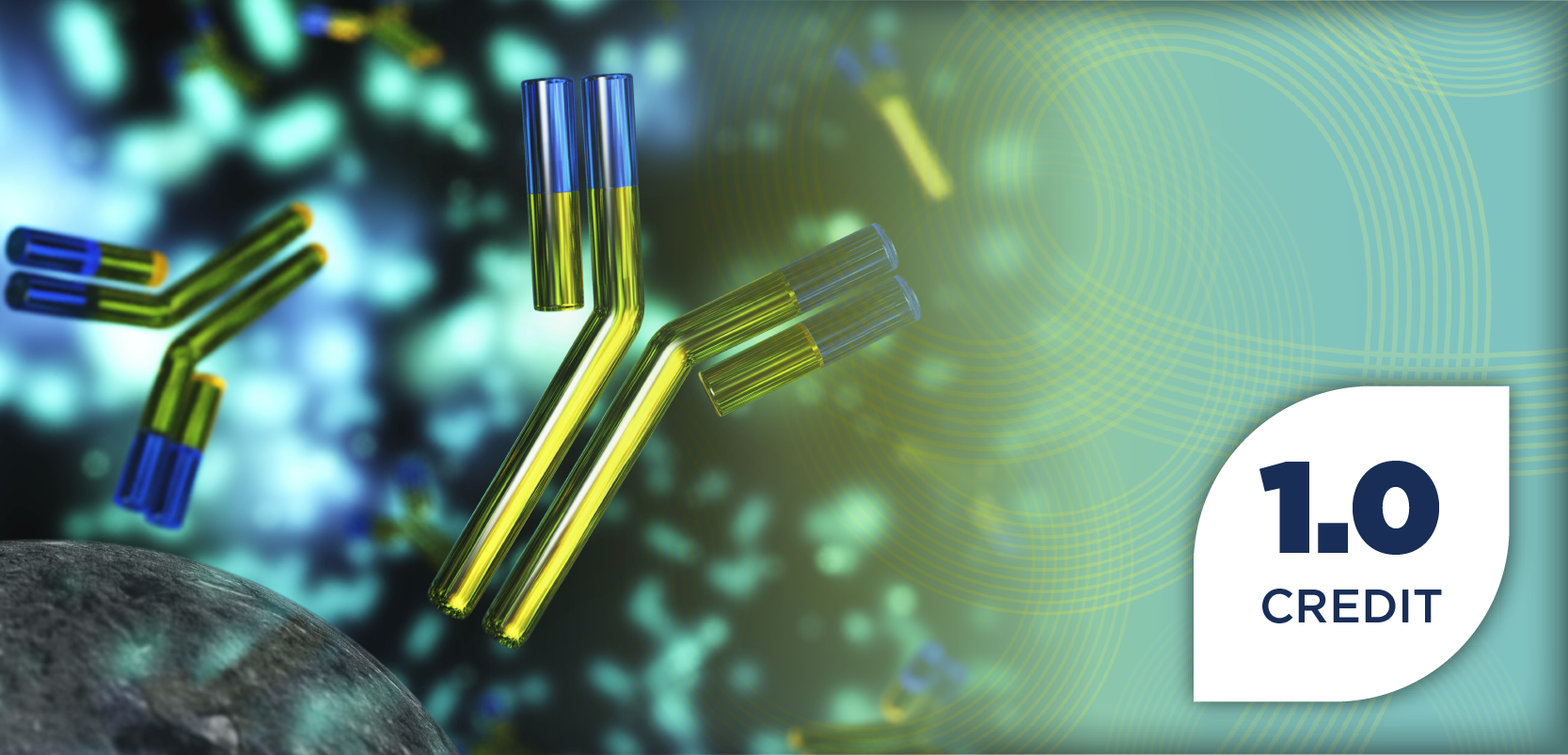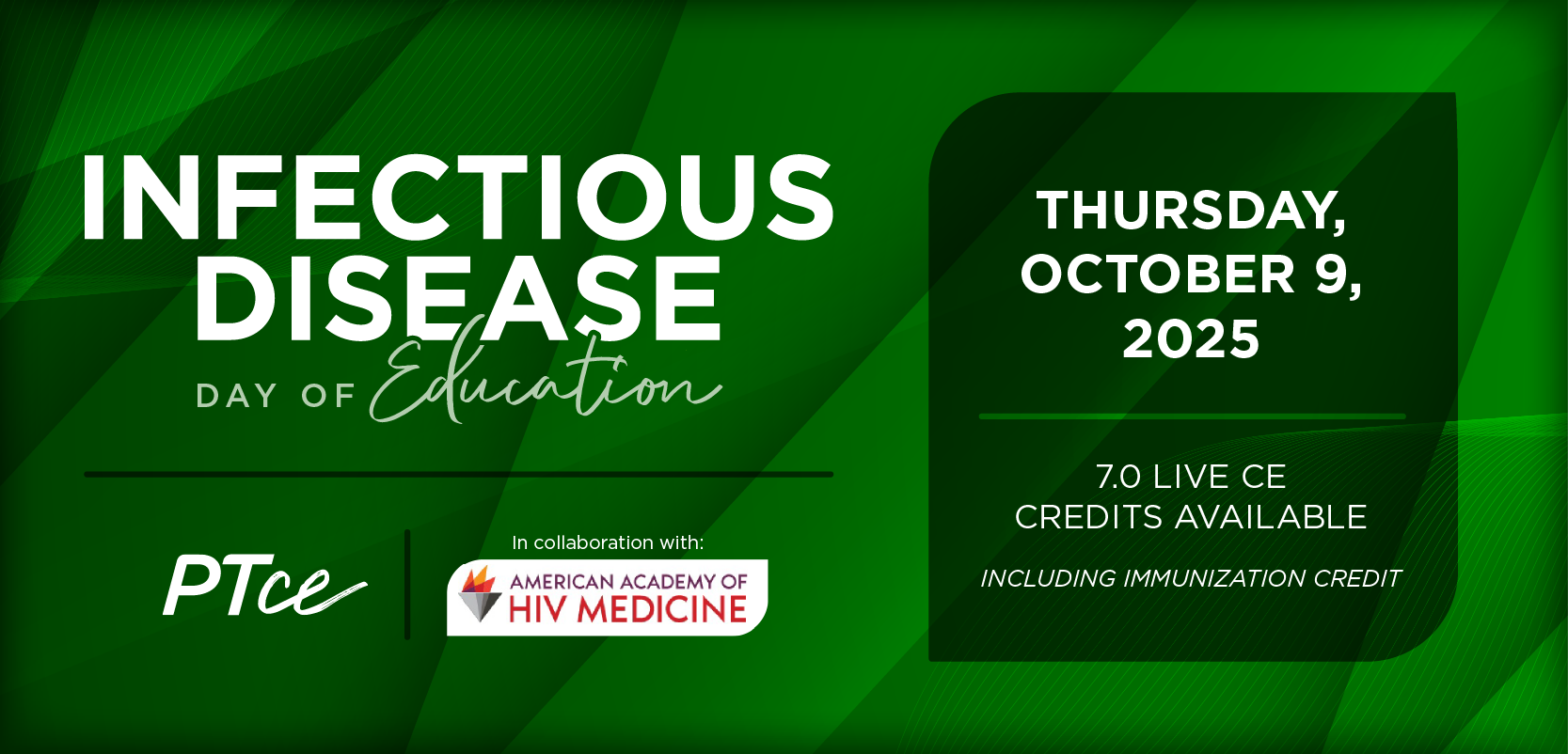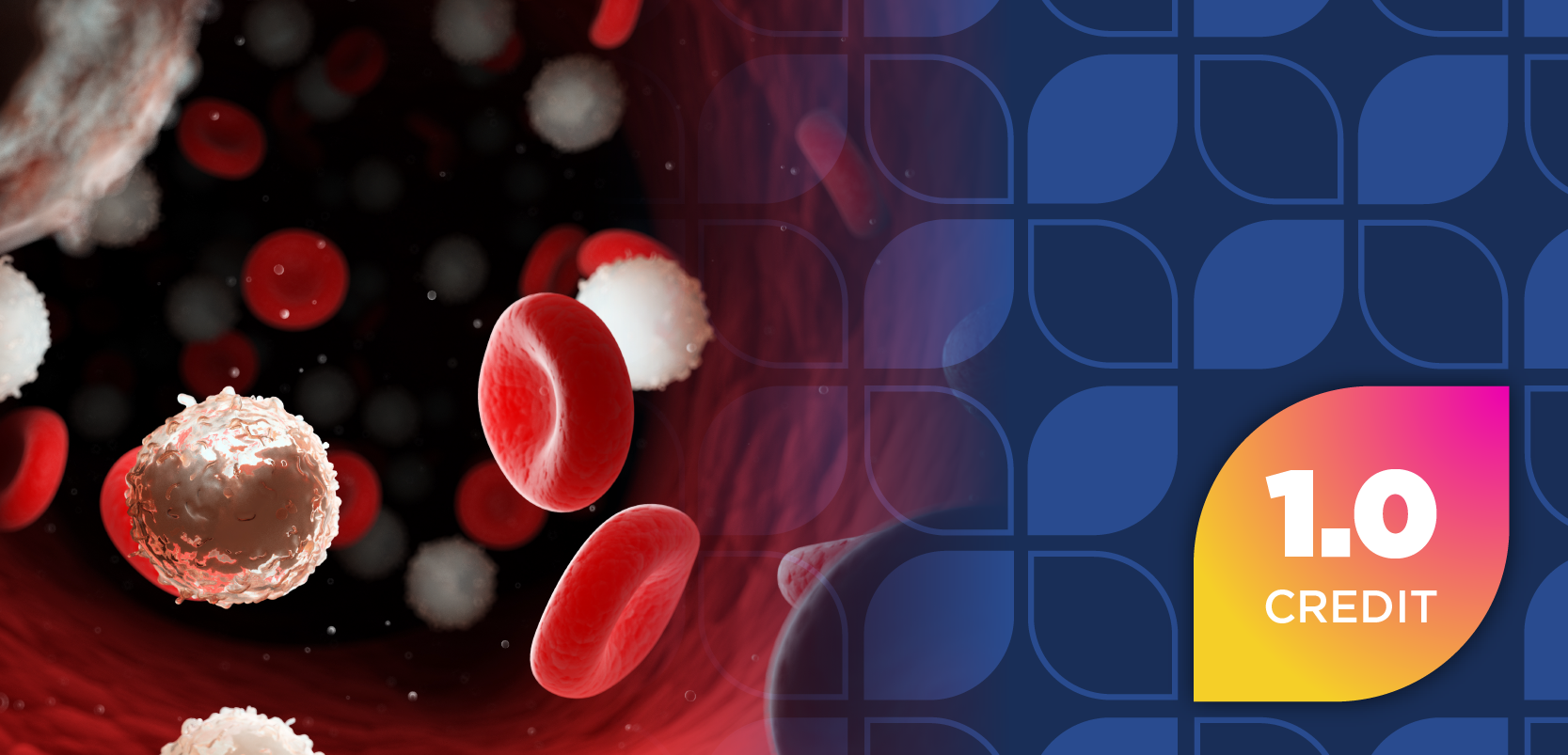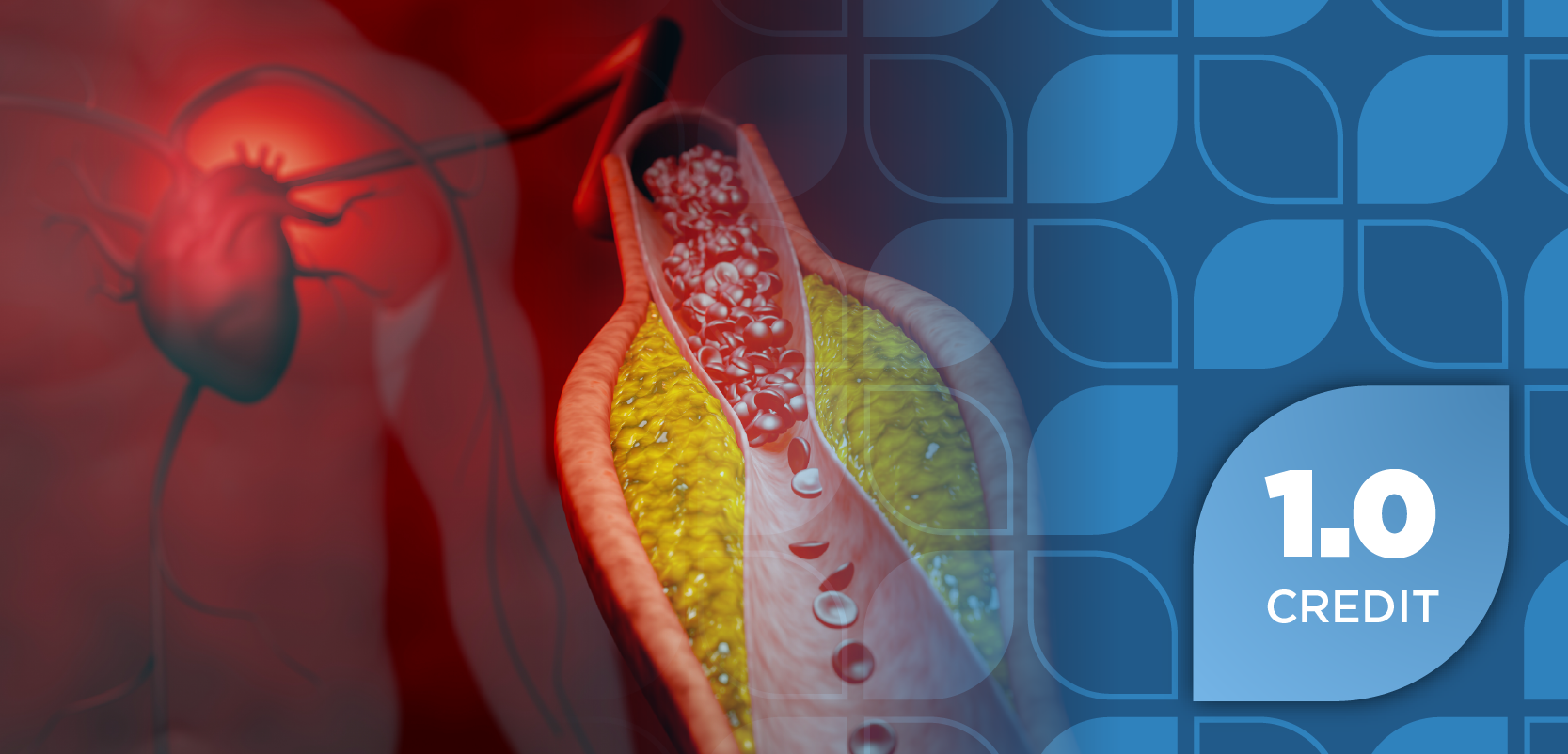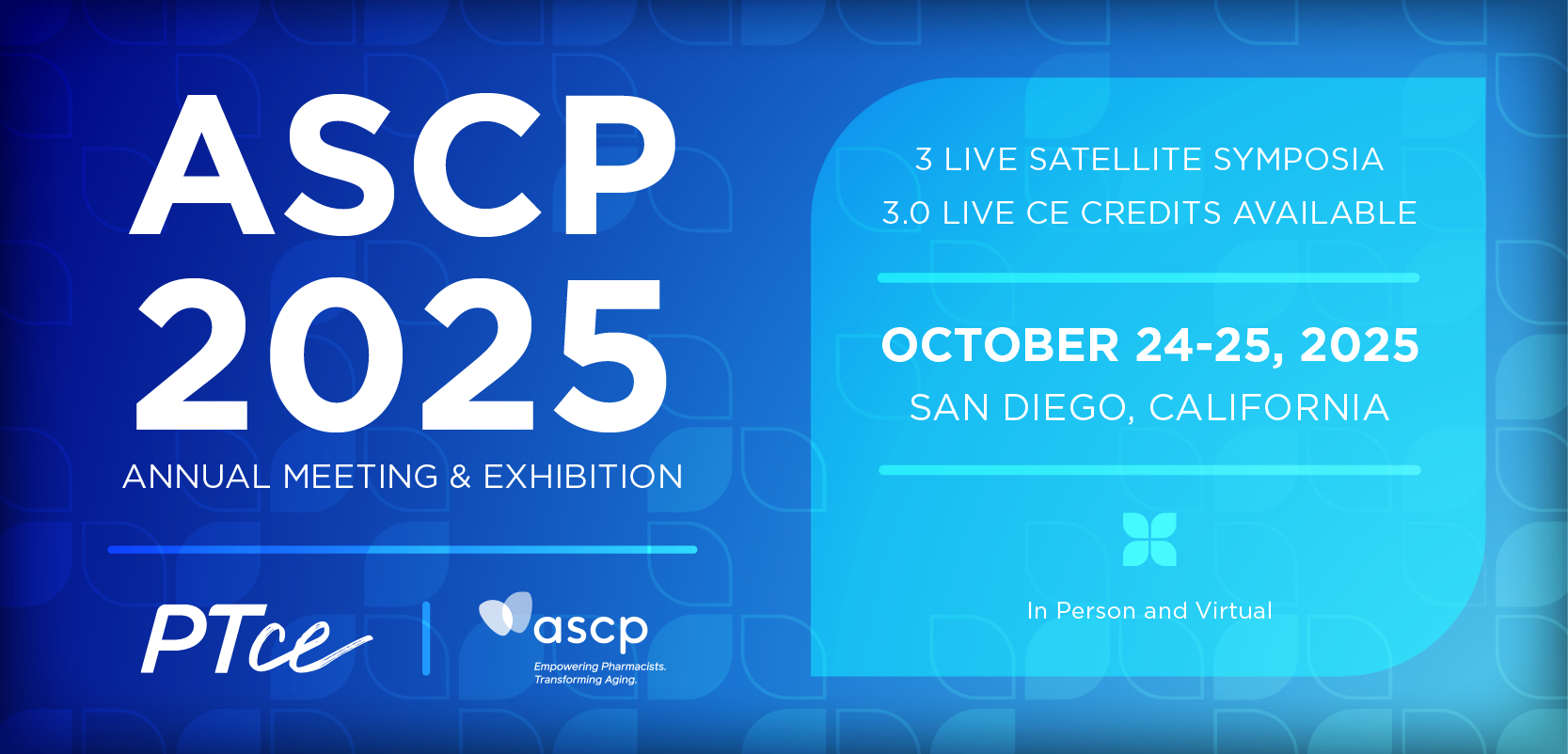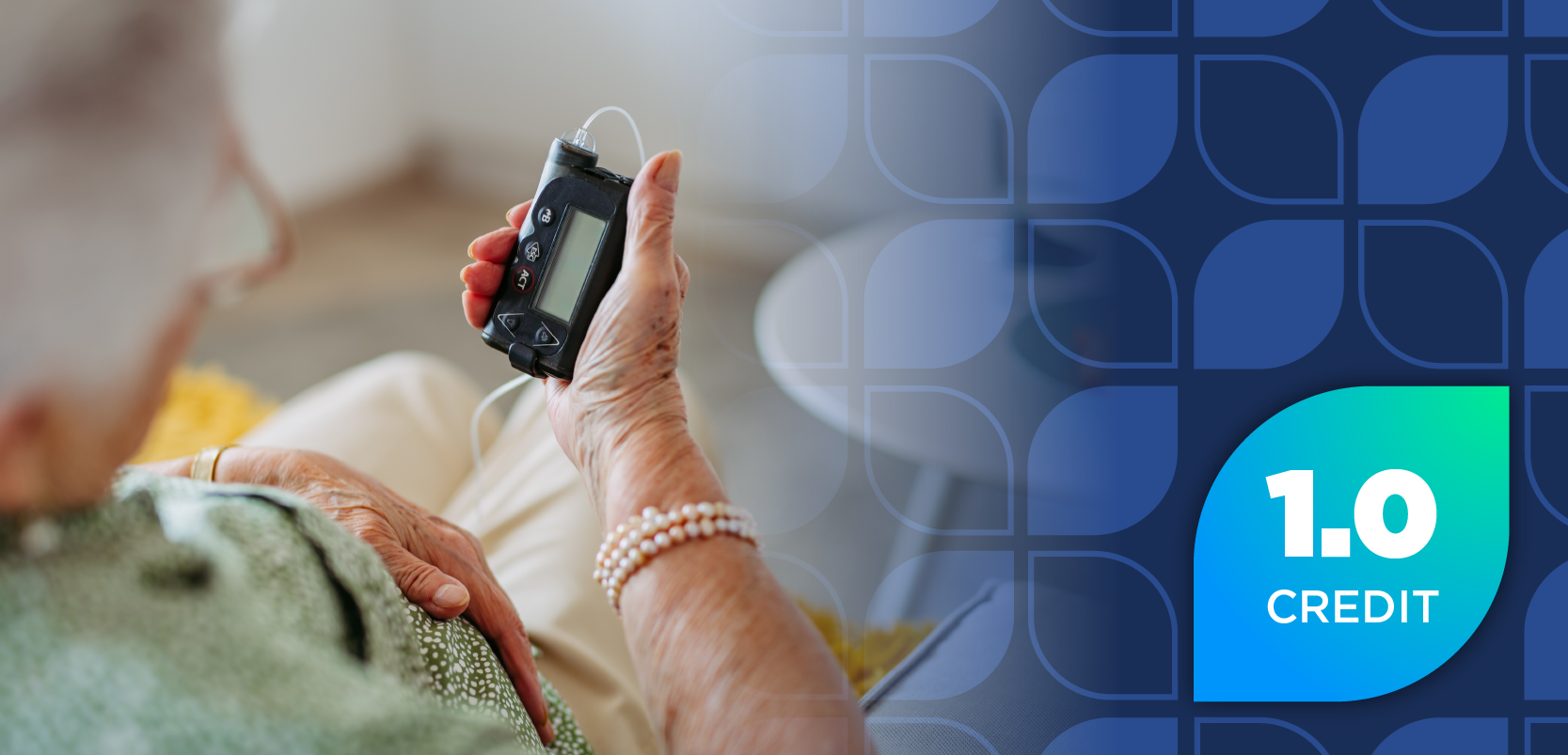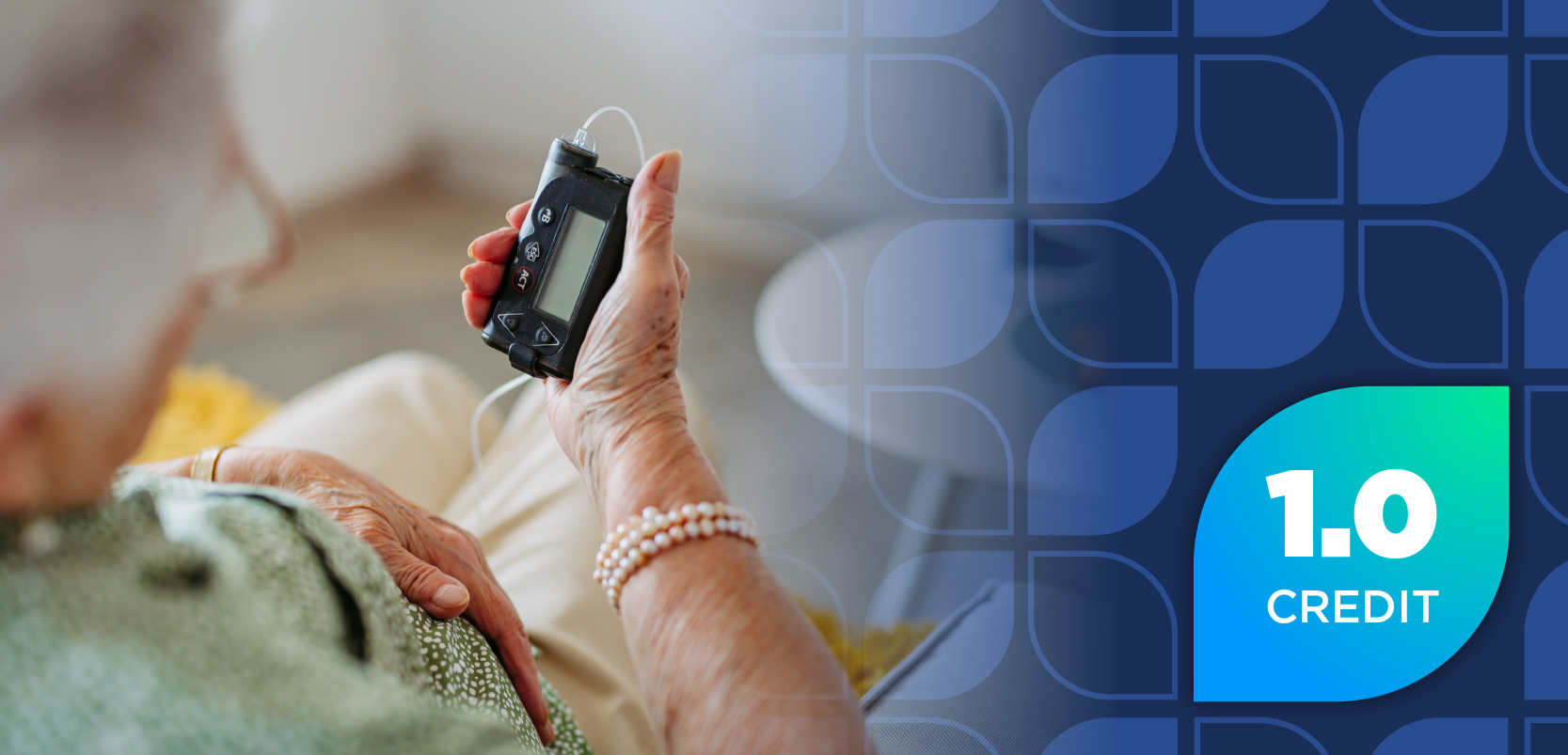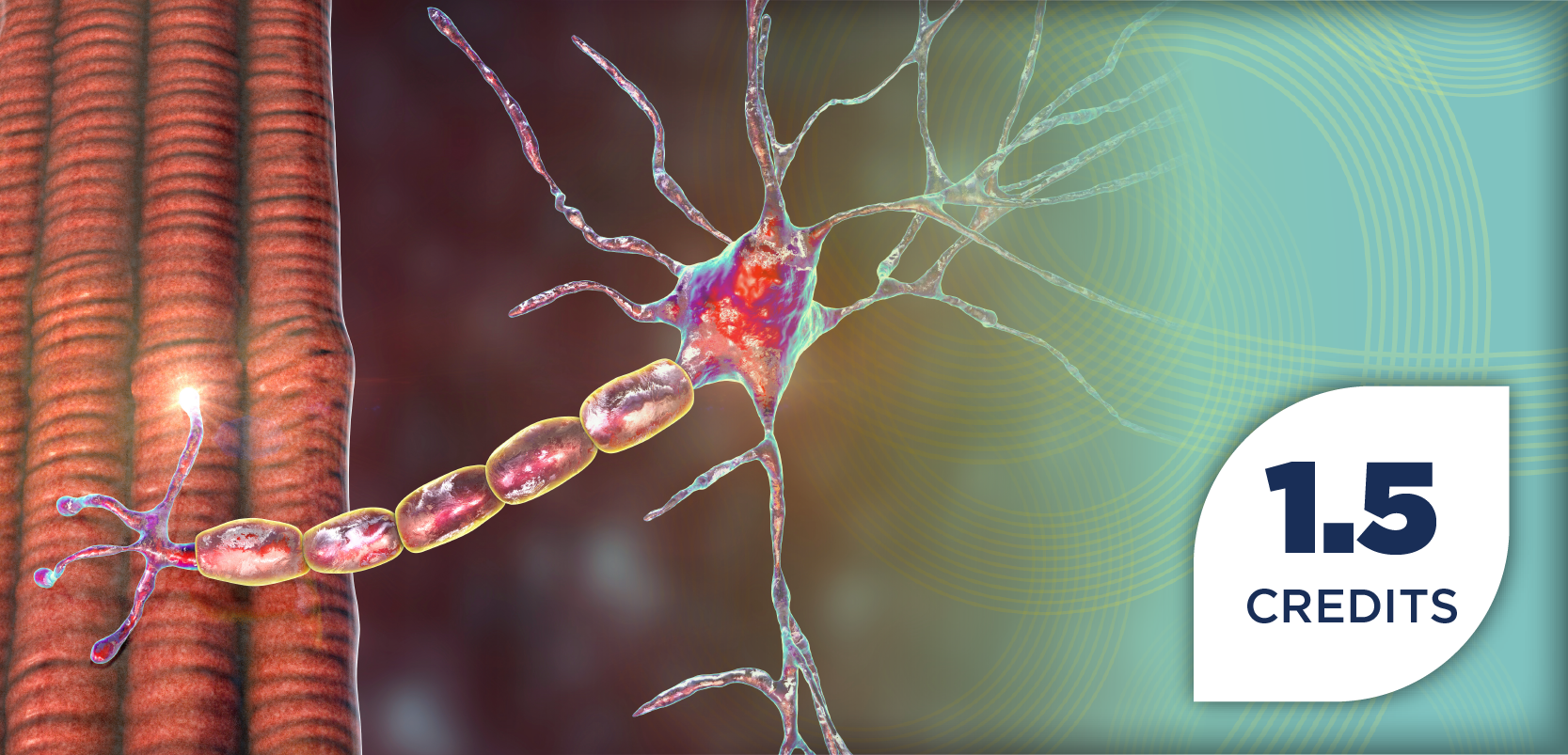Efficacy and Safety in CPX-351 vs 7+3 in Adults Younger Than 60 Years With AML-MRC or t-AML
CPX-351 shows promise for younger adults with therapy-related AML, offering improved survival post-transplant despite lower initial remission rates.
PRÉCIS
Treatment with CPX-351 may result in lower initial complete remission rates but better survival outcomes after stem cell transplantation compared with the 7+3 regimen in younger adult patients with therapy-related acute myeloid leukemia (AML) or AML with myelodysplasia-related changes.
Abstract
Objectives
A liposomal encapsulation of daunorubicin and cytarabine (Vyxeos; Jazz Pharmaceuticals, Inc), also known as CPX-351, has been approved by the FDA for patients 1 year and older with newly diagnosed acute myeloid leukemia with myelodysplasia-related changes (AML-MRC) or therapy-related AML (t-AML). However, the efficacy and safety of CPX-351 in adults younger than 60 years is not well established. This study aimed to assess the safety and efficacy outcomes of CPX-351 compared with the 7+3 induction regimen (7 days of continuous cytarabine and 3 days of anthracycline therapy) in patients aged 18 to 59 years.
Study Design
Retrospective, multicenter, observational cohort study.
Methods
Patients aged 18 to 59 years with t-AML or AML-MRC treated with CPX-351 or 7+3 as induction chemotherapy between 2015 and 2022 at 3 National Cancer Institute–designated cancer centers were included. The primary end point was complete response (CR) or complete response with incomplete hematologic recovery (CRi) rates following induction therapy.
Results
Twenty-four patients received CPX-351, and 6 received 7+3. Of the patients treated with CPX-351, 45.8% achieved a CR or CRi compared with 66.7% treated with 7+3. Median overall survival (OS) was 15.9 months with CPX-351 and 13.0 months with 7+3. Notably, patients who received CPX-351 followed by stem cell transplant (SCT) had a median OS of 58.1 months vs 15.0 months for 7+3 followed by SCT.
Vera Pervitsky, PharmD, BCOP, BCPS, is a hematology/bone marrow transplant oncology pharmacist at Oregon Health & Science University in Portland.
Ila M. Saunders, PharmD, BCOP, DipACLM, FHOPA, is a clinical professor of pharmacy and director of advanced pharmacy practice experiences at the University of California Skaggs School of Pharmacy and Pharmaceutical Sciences, affiliate faculty at the Center for Compassionate Communication, and a blood and bone marrow transplant/malignant hematology pharmacist at the University of California San Diego in La Jolla.
Mimi Lo, PharmD, BCOP, BCPS, is an associate clinical professor and clinical pharmacist of hematology, blood and marrow transplant, and cellular therapies in the Department of Pharmaceutical Services at the University of California San Francisco.
Rebecca Young, PharmD, BCOP, is an associate clinical professor and clinical pharmacist of hematology, blood and marrow transplant, and cellular therapies in the Department of Pharmaceutical Services at the University of California San Francisco.
Benjamin Moskoff, PharmD, BCOP, is a senior clinical pharmacist of hematology/oncology at University of California (UC) Davis Health in Sacramento and an assistant clinical professor of pharmacy at the UC San Francisco School of Pharmacy.
Yunyi Ren, MS, is a senior biostatistician in the Department of Public Health Sciences at the University of California Davis School of Medicine.
Machelle Wilson, PhD, is a principal biostatistician at the University of California Davis School of Medicine.
Brian A. Jonas, MD, PhD, FACP, is a professor of medicine, chief of the Division of Malignant Hematology/Cellular Therapy and Transplantation, chair of the University of California Davis Comprehensive Cancer Center (UCDCCC) Hematologic Malignancies Disease Team Committee, and chair of the UCDCCC Data and Safety Monitoring Committee at UC Davis School of Medicine.
Marisela Banez, PharmD, BCOP, BCPS, is a postgraduate year 2 oncology pharmacy residency program director, a hematology/blood and marrow transplant/cellular therapies clinical pharmacist, and an associate clinical professor at the University of
Julie Guglielmo, PharmD, BCOP, is a postgraduate year 2 oncology pharmacy residency coordinator and senior clinical pharmacist of hematology/oncology at
Conclusion
Treatment with CPX-351 may result in lower CR/CRi rates than 7+3 in this population. However, patients who do respond and undergo SCT may have more favorable survival outcomes.
Introduction
Source of Funding
This research did not receive any specific grant from funding agencies in the public, commercial, or not-for-profit sectors.
Acute myeloid leukemia (AML) is a hematologic disorder of the bone marrow resulting from the production of aberrant myeloid cells.1 Two high-risk subtypes of AML are therapy-related AML (t-AML), which evolves as a result of previous exposure to radiation or chemotherapy, and AML with myelodysplasia-related changes (AML-MRC), which is characterized by at least 20% myeloid blasts in the bone marrow or peripheral blood and 1 or more of the following: prior history of myelodysplastic syndrome (MDS) or an MDS/myeloproliferative neoplasm overlap syndrome, dysplasia in 50% or
more of the cells in 2 or more myeloid lineages, or myelodysplasia-related cytogenetic abnormalities without NPM1 or biallelic CEBPA mutations.2 AML-MRC and t-AML are associated with inferior outcomes compared with de novo AML due to adverse cytogenetics and drug resistance, resulting in low remission rates and a median overall survival (OS) of 9 to 12 months with 7+3, a standard induction regimen consisting of a 7-day continuous infusion of cytarabine and a 3-day course of anthracycline therapy.2,3 To address the decreased efficacy associated with the 7+3 regimen in these AML subtypes, the phase 3 CLTR0310-301 trial (NCT01696084) investigated a liposomal encapsulation of daunorubicin and cytarabine (Vyxeos; Jazz Pharmaceuticals, Inc), also known as CPX-351, in 309 patients with newly diagnosed t-AML or AML-MRC who were aged 60 to 75 years at the time of diagnosis. The study results showed that CPX-351 prolonged the time to hematologic count recovery but improved OS, particularly after allogeneic stem cell transplant (SCT), compared with the standard 7+3 chemotherapy regimen.4 These findings led to the 2017 FDA approval of CPX-351 for adult patients with t-AML or AML-MRC.5 In 2021, the FDA expanded the approval to include pediatric patients 1 year and older with the same AML subtypes based on evidence of effectiveness from the CLTR0310-301 adult study and safety data from 2 single-arm trials: the phase 1/2 AAML1421 trial (NCT02642965), conducted by the Children’s Oncology Group in individuals aged 1 to 21 years with newly diagnosed t-AML or AML-MRC, and the phase 1 CPX-MA-1201 trial (NCT01943682), conducted by Cincinnati Children’s Hospital Medical Center in individuals aged 12 months to 30 years with relapsed AML.6 However, data on the use of CPX-351 for adult patients younger than 60 years are sparse, and no randomized trials have been conducted to determine whether younger adult patients with t-AML or AML-MRC respond as favorably to CPX-351 as the older population who comprised the phase 3 CLTR0310-301 trial. A retrospective, single-arm, observational study assessed the efficacy and safety of CPX-351 in patients aged 18 to 59 years and found comparable response rates (ie, complete response [CR] and CR with incomplete hematologic recovery [CRi]) and OS to the CLTR0310-301 adult trial.7,8 Two retrospective studies also assessed the efficacy of CPX-351 in older vs younger patients and found similar response rates and OS.9,10 None of the currently published literature, however, compares CPX-351 with 7+3 in adult patients younger than 60 years. Therefore, we aimed to assess the efficacy and safety of CPX-351 vs 7+3 as induction chemotherapy in patients aged 18 to 59 years with t-AML or AML-MRC.
Author Disclosures
Brian A. Jonas, MD, PhD, FACP, is a consultant/adviser for AbbVie; Bristol Myers Squibb; Crescent Biopharma, Inc; Daiichi Sankyo; Genentech; Gilead Sciences, Inc; Kymera Therapeutics, Inc; Pfizer Inc; Rigel Pharmaceuticals, Inc; Servier Pharmaceuticals; and Takeda (all of which are unrelated to this content); on the protocol steering committee for Crescent Biopharma, Inc, and the data monitoring committee for Gilead Sciences; travel reimbursement/support from Rigel Pharmaceuticals; and research funding to his institution from AbbVie; Amgen; Aptose Biosciences Inc; Arog Pharmaceuticals; Bristol Myers Squibb; Crescent Biopharma, Inc; Daiichi Sankyo; F. Hoffmann-La Roche Ltd; Forma Therapeutics Holdings, Inc; Forty Seven, Inc; Genentech/Roche; Gilead Sciences; Hanmi Pharmaceutical; Immune-Onc Therapeutics, Inc; Incyte; Jazz Pharmaceuticals plc; Leadiant Biosciences; Lilly; Pfizer; Pharmacyclics Inc; and Treadwell Therapeutics.
Ila M. Saunders, PharmD, BCOP, DipACLM, FHOPA, is a consultant/adviser for the following entities that are unrelated to this content: Managed Market Insights and Tech; Sanofi, Inc; and The France Foundation.
The remaining authors report no relationship or financial interest with any entity that would pose a conflict of interest with the subject matter of this article.
Methods
This multicenter, retrospective, observational cohort study was conducted across 3 National Cancer Institute–designated cancer centers. The institutional review boards at each site approved all study procedures. Patients were included if they were aged 18 to 59 years and treated with CPX-351 or 7+3 as induction chemotherapy for newly diagnosed AML-MRC or t-AML between July 2015 and September 2022. The primary outcome was the incidence of CR or CRi after induction chemotherapy. Response rates were defined using 2022 European LeukemiaNet recommendations.11 CR was defined as less than 5% blasts in the bone marrow, the absence of circulating blasts and extramedullary disease, an absolute neutrophil count (ANC) of at least1000/μL, and a platelet count of at least 100,000/μL. CRi was defined as meeting all CR criteria except for residual neutropenia (ANC < 1000/μL) or thrombocytopenia (platelets < 100,000/μL).11
Secondary outcomes included 30- and 90-day mortality, OS, incidence of SCT, relapse-free survival (RFS), hospital length of stay (LOS), and incidence of adverse events. OS was defined as the time from initiation of induction therapy until death. RFS was defined as the time from achieving CR or CRi until relapse or death. Hospital LOS was calculated from the date of the first dose of induction chemotherapy to the date of hospital discharge.
We utilized descriptive statistics to analyze categorical variables, including the primary outcome, and conducted the Kaplan-Meier method and log-rank test using R 4.2.2 (RStudio 2022.07.2+576) to analyze survival outcomes.
Results
Between July 2015 and September 2022, 24 patients were treated with CPX-351 and 6 patients with 7+3 for newly diagnosed AML-MRC or t-AML. The median (IQR) age at treatment initiation was 52 (44-56) years in the CPX-351 group and 50 (42-58) years in the 7+3 group. Of the patients who received CPX-351, 58.3% (n = 14) were male compared with 50.0% (n = 3) in the 7+3 group. All patients who received 7+3 had a diagnosis of AML-MRC, whereas in the CPX-351 cohort, 58.3% (n = 14) had a diagnosis of AML-MRC and 41.7% (n = 10) had a diagnosis of t-AML. Only patients in the CPX-351 group had prior anthracycline exposure (n = 6; 25.0%). Of those treated with CPX- 351, 29.2% (n = 7) had prior hypomethylating agent exposure compared with 50.0% (n = 3) of patients in the 7+3 cohort (Table).
Postinduction bone marrow biopsies confirmed CR in 29.2% (n = 7) of patients in the CPX-351 group and 50.0% (n = 3) of patients in the 7+3 group. A CR or CRi was achieved in 45.8% (n = 11) and 66.7% (n = 4) of patients who received CPX-351 and 7+3, respectively. Early mortality, assessed at 30 and 90 days from induction initiation, was more prevalent in patients who received CPX-351; 8.3% died within 30 days, and 18.7% died within 90 days. No patients treated with 7+3 died within the first 90 days of treatment. All patients were admitted for induction chemotherapy, with a median (IQR) LOS of 34 (28-47) days in the CPX-351 group and 26 (20-42) days in the 7+3 group.
At a median follow-up of 14.1 months, the median OS was 15.9 months and 13.0 months (P = .936) with CPX-351 and 7+3, respectively (Figure). Of the patients who achieved CR or CRi, the median RFS was 57.0 months in the CPX-351 group and 15.5 months in the 7+3 cohort (P = .922). In the CPX-531 group, 29.2% of patients underwent SCT vs 50.0% in the 7+3 group. The median OS among patients who underwent SCT was 58.1 months following CPX-351 induction vs 15.0 months following 7+3 induction (P = .497). Of the patients who did not undergo SCT, median OS was 14.7 months with CPX-351 induction and 8.7 months with 7+3 induction. SCT in patients treated with CPX-351 induction led to a significantly longer median OS than patients who received CPX-351 but did not undergo SCT (58.1 months vs 14.7 months, respectively; P= .028).
Febrile neutropenia was the most common adverse event, experienced by all patients across both cohorts during induction chemotherapy. Bacteremia was reported in 45.8% and 50.0% of patients treated with CPX-351 and 7+3, respectively, and pneumonia was diagnosed in 33.3% of patients treated with CPX-351 and 50.0% of those treated with 7+3. Major bleeding, as defined by the International Society on Thrombosis and Haemostasis,12 occurred in 25.0% and 16.7% of patients who received CPX-351 and 7+3, respectively. Venous thromboembolism occurred more frequently in the CPX-351 group (16.7% vs 0% with 7+3).
Discussion
This study adds to the body of literature assessing CPX- 351 efficacy and safety in a younger patient population. Although the study had a small sample size, it is the first to our knowledge to retrospectively compare CPX-351 and 7+3 in adult patients younger than 60 years with newly diagnosed AML-MRC or t-AML. Our findings suggest that CPX-351 may be associated with a higher risk of early mortality and a lower incidence of CR/CRi than 7+3. Furthermore, our CR/CRi rate of 45.8% in patients treated with CPX-351 is similar to that of comparable retrospective analyses that observed CR/CRi rates of 44% to 67%.7-10,13,14
Median OS with CPX-351 in our study was longer in both arms than in the phase 3 trial, which was conducted in an older population,4 and similar to that of the median OS of 12.4 months reported in a retrospective analysis conducted by Przespolewski et al across 6 US academic medical centers.7,8 Lee et al retrospectively assessed CPX-351 in a younger vs older population in a Florida cancer hospital and reported a median OS of 18 months in the younger cohort,9 similar to our results. Furthermore, we observed notable differences in survival when stratifying patients by receipt of SCT, which was also observed in Lee et al.9 Similarly, an Italian study with a comparable patient population reported a median OS of 20 months with CPX-351, and the median OS was not reached in patients who underwent a transplant.13 Likewise, results from an analysis of a national cancer registry in England of a comparable patient population showed a median OS of 17.3 months in patients younger than 60 years treated with CPX-351, with median OS again not reached in patients who received an SCT.10 Finally, a German study of patients with AML-MRC or t-AML demonstrated a 2-year OS rate of 74% in the cohort of patients younger than 60 years, a majority of whom underwent an SCT.14
Each of the previously mentioned studies reported a longer median OS in a younger cohort of patients compared with the median OS of 9.56 months reported by Lancet et al for the older population studied in the phase 3 CLTR0310- 301 trial.4,7-10,13,14 However, aside from our study, none have compared these outcomes with a suitable control such as 7+3. Like our study, each of the aforementioned studies, including the phase 3 trial, reported longer OS in patients who underwent SCT.4,7-10,13,14 Because AML-MRC and t-AML are unfavorable subtypes of AML with inferior outcomes compared with de novo AML, SCT is imperative to achieve a long-term cure in this patient population.2,3 Therefore, it is unsurprising that patients who received CPX-351 and were able to undergo SCT had improved survival outcomes vs those who did not undergo SCT. This undoubtedly supports the National Comprehensive Cancer Network recommendation of allo-SCT as the preferred consolidation therapy in patients with t-AML or AML-MRC who achieve remission with induction chemotherapy.15
Aside from Przespolewski et al, no other retrospective study reported the incidence of adverse events.7 Our adverse events findings were similar to those from Przespolewski et al but a higher number of patients in our CPX-351 cohort experienced bleeding and febrile neutropenia.7 Across the 5 aforementioned studies, early 30-day mortality ranged from 0% to 9%,8-10,13,14 which is similar to findings from Lancet et al for the phase 3 trial.4 However, in our study comparing CPX-351 with 7+3, we found that although the early mortality rate for our CPX-351 cohort was similar to the rate reported by Lancet
et al, patients in our analysis had lower early mortality with 7+3 than with CPX-351, a divergence from the phase 3 trial.4 The scarcity of safety data in younger adult patients treated with CPX-351 supports the need for additional studies.
Data Availability Statement
These clinical trial data can be requested by qualified researchers who engage in rigorous, independent scientific research and will be provided following review and approval of a research proposal, statistical analysis plan, and execution of a data sharing agreement. Data requests can be submitted at any time, and the data will be accessible for 12 months with possible extensions considered.
Limitations
Given the retrospective nature of our study, along with the small sample size, the generalizability of our study is limited. Furthermore, the impact of specific SCT characteristics, such as conditioning regimen and intensity, graft-vs-host disease prophylaxis, and donor source, was not evaluated in this study. We also were unable to assess the impact of measurable residual disease on outcomes due to lack of access to this testing during the study period. In addition, slight variations in clinical practice and supportive care management at each institution included in this analysis may have impacted treatment outcomes and are difficult to account for with a small sample size. Therefore, these findings should be confirmed in an adequately powered, randomized, phase 3 study.
Conclusion
Because none of the currently published literature compares CPX-351 with 7+3 in a younger adult patient population with newly diagnosed t-AML or AML-MRC, we aimed to assess the efficacy and safety of CPX-351 vs 7+3 in patients aged 18 to 59 years. Our study found that treatment with CPX-351 in this patient population was associated with a trend toward higher early mortality and lower CR/CRi rates compared with the 7+3 regimen. However, patients who underwent SCT after CPX-351 induction had more favorable survival outcomes. Our findings suggest that CPX-351 may be a viable treatment option for younger adult patients with newly diagnosed t-AML or AML-MRC, but further research (ie, a randomized phase 3 trial) is needed to optimize the agent’s use in this population and to better understand the factors associated with improved outcomes, particularly with regard to SCT.
REFERENCES
Acute myeloid leukemia treatment (PDQ)—patient version. NIH National
Cancer Institute. Updated May 16, 2025. Accessed June 30, 2025. https://
www.cancer.gov/types/leukemia/patient/adult-aml-treatment-pdqKoenig KL, Sahasrabudhe KD, Sigmund AM, Bhatnagar B. AML with
myelodysplasia-related changes: development, challenges, and treatment
advances. Genes (Basel). 2020;11(8):845. doi:10.3390/genes11080845Kuykendall A, Duployez N, Boissel N, Lancet JE, Welch JS. Acute
myeloid leukemia: the good, the bad, and the ugly. Am Soc Clin Oncol
Educ Book. 2018;(38):555-573. doi:10.1200/edbk_199519Lancet JE, Uy GL, Cortes JE, et al. CPX-351 (cytarabine and
daunorubicin) liposome for injection versus conventional cytarabine plus
daunorubicin in older patients with newly diagnosed secondary acute
myeloid leukemia. J Clin Oncol. 2018;36(26):2684-2692. doi:10.1200/
JCO.2017.77.6112FDA approves first treatment for certain types of poor-prognosis acute
myeloid leukemia. News release. FDA. Updated March 28, 2018.
Accessed June 26, 2025. https://www.fda.gov/news-events/pressannouncements/
fda-approves-first-treatment-certain-types-poor-prognosisacute-
myeloid-leukemiaJazz Pharmaceuticals announces FDA approval of additional indication
for Vyxeos (daunorubicin and cytarabine) for the treatment of secondary
acute myeloid leukemia in pediatric patients. News release. Jazz
Pharmaceuticals. March 30, 2021. Accessed June 26, 2025. https://
investor.jazzpharma.com/news-releases/news-release-details/jazzpharmaceuticals-announces-fda-approval-additionalPrzespolewski A, Goldberg AD, Talati C, et al. Safety and efficacy of
CPX-351 in younger patients (< 60 years old) with secondary acute
myeloid leukemia. Blood. 2023;141(12):1489-1493. doi:10.1182/
blood.2022016678Przespolewski A, Goldberg AD, Talati C, et al. Safety and efficacy
of CPX-351 in younger patients < 60 years old with secondary acute
myeloid leukemia: an updated analysis. Blood. 2021;138(suppl 1):1264.
doi:10.1182/blood-2021-153791Lee D, Jain AG, Deutsch Y, et al. CPX-351 yields similar response and
survival outcome in younger and older patients with secondary acute
myeloid leukemia. Clin Lymphoma Myeloma Leuk. 2022;22(10):774-779.
doi:10.1016/J.CLML.2022.06.001Legg A, Lambova A, Broe A, Levy J, Medalla G. Real-world experience
with CPX-351 treatment for acute myeloid leukemia in England: an
analysis from the National Cancer Registration and Analysis Service.
Clin Lymphoma Myeloma Leuk. 2023;23(10):e323-e330. doi:10.1016/j.
clml.2023.07.003Döhner H, Wei AH, Appelbaum FR, et al. Diagnosis and management
of AML in adults: 2022 recommendations from an international expert
panel on behalf of the ELN. Blood. 2022;140(12):1345-1377. doi:10.1182/
blood.2022016867Schulman S, Kearon C; Subcommittee on Control of Anticoagulation of
the Scientific and Standardization Committee of the International Society
on Thrombosis and Haemostasis. Definition of major bleeding in clinical
investigations of antihemostatic medicinal products in non-surgical
patients. J Thromb Haemost. 2005;3(4):692-694. doi:10.1111/j.1538-
7836.2005.01204.Garibaldi B, Franciosa M, Pilo F, et al. P535: updates from Italian
multicenter real-life experience on CPX-351 therapy in young patients
(<60 years old). HemaSphere. 2022;6:434-435. doi:10.1097/01.
HS9.0000845028.78177.a4Rautenberg C, Middeke JM, Röllig C, et al. Real-world experience with
first-line CPX-351 treatment in patients with acute myeloid leukemia –
long-term follow-up with focus on younger patients. Blood Cancer J.
2025;15(1):60. doi:10.1038/s41408-025-01274-0NCCN. Clinical Practice Guidelines in Oncology. Acute myeloid
leukemia, version 3.2024. Accessed September 15, 2024. https://www.
nccn.org/professionals/physician_gls/pdf/aml.pdf
Articles in this issue
about 1 month ago
Article
You Shall Not Pass: Pharmacist Review of Drug-Herb Interactions in Cancer Treatmentabout 2 months ago
Article
A Season of Growth: Reflecting on Summer, Connection, and the Power of Mentorshipabout 2 months ago
Article
From Botanicals to Blood Counts: Exploring Pharmacist-Led Cancer Care StrategiesNewsletter
Stay informed on drug updates, treatment guidelines, and pharmacy practice trends—subscribe to Pharmacy Times for weekly clinical insights.




